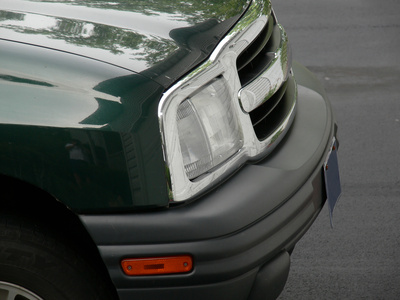
The majority of automobile grilles are made of either High Impact Styrene or ABS. Styrene is a cheaper plastic that is prone to breaking over time from sun damage. ABS, while a stronger plastic, can break over time as well. Replacement grilles are expensive and often difficult to find, if the vehicle is no longer in production. The good news is that Styrene and ABS can be repaired easily. Use a small amount of solvent cement and an applicator to repair a damaged plastic grille, saving money and time otherwise spent trying to find a replacement.
Wash the grille thoroughly with dish washing detergent and hot water. The dish washing detergent should be concentrated. Add two teaspoons of detergent to 8 ounces of hot water and mix. Use a toothbrush to scrub the entire grill. Solvent cement needs a grease-free surface in order to bond correctly. Allow the grille to dry completely.

Examine the grille for cracks. After washing the grille, cracks that were hidden by dirt and grease will become visible. Use small pieces of painter’s masking tape to mark the locations of the cracks and any other damage. This makes it easier to find the cracks and damage later on.
Fill the squeeze bottle applicator to the halfway point with acrylic solvent cement. The solvent cement will be used for fine cracks where there is no gap or space within the break. The gap-filling solvent cement will be used for any cracks that have a slight gap to them. Both solvent cements work in the same way. However, the gap-filling solvent cement is thicker and is designed to fill voids between the cracks. Apply painter’s masking tape to the areas around the cracks to keep the solvent cement from damaging any paint or chrome plating on the grille.
Squeeze the half full applicator bottle with the thumb and index finger until the cement is near the top of the bottle. Slightly release the pressure and a vacuum has been created within the container. The vacuum keeps the cement from spilling out when the bottle is tilted during the repair. Apply a thin bead of cement to any fine cracks, using the gap-filling cement for wider cracks. Gap-filling cement should be applied in a thin bead as well. Allow the cement to dry for 6 hours.

Scrape any residual gap-filling solvent cement off with the edge of a utility knife, using it as a scraper. Check the grille once more for any remaining cracks. If necessary, apply cement to any additional cracks. Allow the glue to dry for 6 hours. Remove the masking tape and the project is complete.